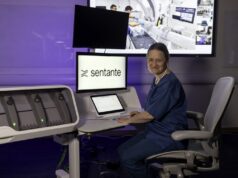Penumbra has announced US commercial availability of the Penumbra JET 7 and Penumbra JET D Reperfusion Catheters powered by the Penumbra ENGINE aspiration source. The Penumbra JET 7 and JET D Reperfusion Catheters deliver deep vacuum aspiration power of the Penumbra ENGINE to enable physicians to extract thrombus effectively and safely in acute ischaemic stroke patients.
The Penumbra JET 7 is the Penumbra System’s seventh generation reperfusion catheter for proximal large vessel occlusions, and JET D Reperfusion Catheter is designed specifically for distal occlusions. JET 7 Reperfusion Catheter has a large 0.072” lumen for deep vacuum aspiration and is designed for trackability and navigation, featuring 20 transitions from the proximal shaft to distal tip, a progressive distal coil wind for superior flexibility and Quad-Wire technology in the proximal shaft for enhanced pushability. JET D brings deep vacuum aspiration power to distal occlusions with a smaller profile.
“The JET 7 Reperfusion Catheter with its advanced tracking technology and large 0.072” aspiration lumen is the most advanced device for stroke. In my clinical experience, I was able to easily and quickly navigate the JET 7 through tortuous anatomy to the face of the clot and achieve full revascularisation after a single pass,” said Alejandro M Spiotta, Medical University of South Carolina, Charleston, USA. “We know from our own published experience that increases in aspiration lumen size have led to faster recanalisation times and higher likelihood of success at first pass without compromising safety. I eagerly await collecting and publishing our clinical experience with JET 7.”
“The JET 7 and JET D along with the new ENGINE provide a suite of tools to effectively address both proximal and distal occlusions,” said Ian Kaminsky, Radiology Imaging Associates/Swedish Medical Center, Englewood, USA. “In our initial case experience, we saw the easy tracking of the JET 7 and JET D in a range of tortuous conditions and vessel locations that, combined with the deep vacuum of the ENGINE, offer the potential to increase our rate of complete first pass revascularisation while decreasing procedure times.”










